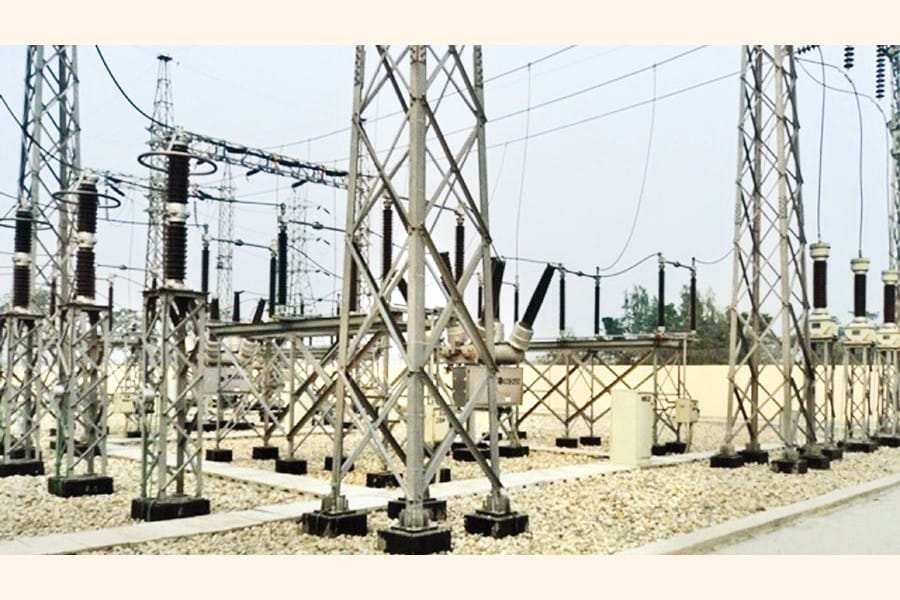Shahnaj Begum: Unplanned power import or investment plan in the power sector will be a huge financial challenge for the government in the upcoming days, said power sector experts.
Bangladesh has failed to create the real demand-supply scenario of electricity to attain the GDP growth, they said.
They suggested keeping power generation ratio (between local and import or public and private) under the government responsibility to control the power tariff as well as ensure system security.
Experts made such comments against the backdrop of government’s new announcement that it was mulling over a plan to import 9,000 MW of electricity from India, Nepal and Bhutan (in future).
At present Bangladesh is importing 1160 MW of electricity rom India. State Minister for Power, Energy and Mineral Resources Nasrul Hamid disclosed the idea last week to add 11,000 MW of electricity to the national grid by 2025.
Presently country’s power generation capacity is 22,000MW while maximum demand is 12,000-13,000MW leaving an idle capacity of between 9,000MW and 10,000MW every day.
The data showed that the overall power capacity utilization in Bangladesh for 2018-19 was only 43 percent while the capacity payments to idle plants reached US$1.1bn in 2018-19.
According to the study done by the Institute of Energy Economics and Financial Analysis (IEEFA), Bangladesh will have 58 percent surplus power in 2029-30 if it keeps adhering to the existing power system Master Plan – 2016.
This prediction was given after analyzing the Power Sector Master Plan 2016. The question is why did the government make this new announcement or new plan before getting accurate data on the demand-supply scenario?
“If the tariff of imported power is less than the local one, then obviously we welcome the idea, but we need to assure four things: i) ensuring level playing field for local entrepreneurs (ii) imposing TAX and VAT on imported power to increase government revenue (what the IIPs are paying although they are using HFO for power generation), (iii) before taking up a huge plan and commitment, the existing power system should be examined and a real future plan of power demand-supply to be drawn to avoid filthy and mushroom investment to keep the tariff at the tolerance level and finally (iv) establishing own safeguard against electricity security system keeping the geo-political scenario in mind,” President of the Bangladesh Independent Power Producers’ Association Imran Karim told the Daily Observer on Tuesday.
A recent research found that demand for power in 2030 will only require 29,619MW but PSMP 2016 targeted to produce 46,000MW of electricity by this time.
When contracted, the think tank (public) of power sector, Power Cell, DG Mohammad Hossain said, “Covid-19 impact will mean a long-term power demand and that is why we need to revise it to match with the new situation.”
When asked about the new plan he said the new plan would not be a problematic one as it could be revised at any time.
“Bangladesh will be stuck in a vicious circle of an obligation for making ‘capacity payment’ to private power plant owners without receiving their electricity both in public and private sector,” Former Energy adviser Dr. M. Tamim said. If all the plants within the Revisited Power System Master Plant (PSMP) were built, it would be a tremendous challenge for the country and in that case the high-cost production should immediately be stopped. “I don’t know what will happen,” he added.
He said Bangladesh signed the world best deal with AES and Meghnaghat Power Project 20 years back, but unfortunately, it failed to keep the pace in all respect both in international and local contracts.
“Overcapacity will lead to significantly lower capacity utilization of the new plants. So we need to calculate the true GDP growth rate and generation growth rate for meeting the demand, but I don’t understand the meaning of the government project which said we need 30,000 MW of electricity by 2025 but the actual projection is only 17,000 MW,” he said.
Significant capacity payments to idle power plants are not helping drive the need for increasing government subsidies to the state-owned BPDB to cover its financial losses as it runs all the liquid fuel-based power plant here due to gas shortage.
“We need to have a realistic demand forecast. If we undertake too many projects and they are not used properly, then they would affect the whole system and the economy.”
“So far as I know the geo-political scenario or issues never create a problem in implementing any big international commercial deal, but we are to be cautious in negotiating the deal to justify the tariff issues,” he further said.
The Center for Policy Dialogue in its research paper said such a high amount of reserve capacity is against the 25 percent target set in the Power Sector Master Plan and significantly higher than the 10 percent reserve capacity maintained in developing countries.
Payment of capacity charges to power plants is a growing expenditure for Bangladesh Power Development Board (BPDB), particularly for rising unused and under-utilization of capacity, said Khondaker Golam Moazzem, Research Director of the CPD.
The capacity payment has significantly increased over the years from Tk 1,790 crore in FY10 to Tk 8,929 crore in FY19, up by 398 percent.
Accordingly, the Power Division is now seeking a Tk35, 000 crore bailout to pay independent power producers (IPPs) and handle other financial crises.
Now the million dollar question is why is the government taking more power generation projects right now?

